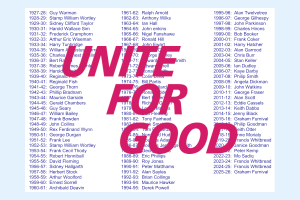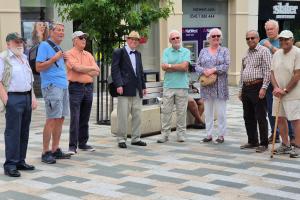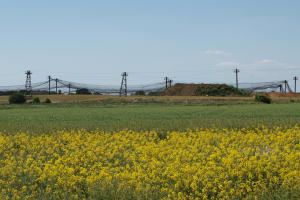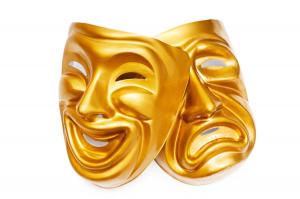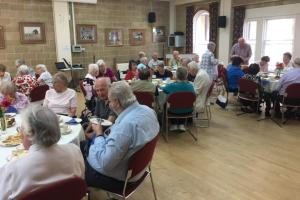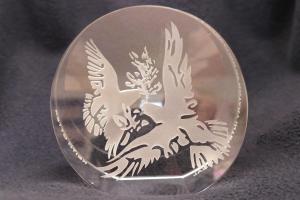Shakespeare's London tour - Part 2
Thu, Mar 18th 2021 at 1:00 pm - 2:15 pm
The Bard in London

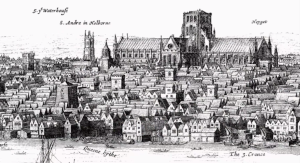 Today President Janice showed us the second part of Lance Pierson’s video tour of Shakespeare’s London, this time concentrating on the area north of the Thames.
Today President Janice showed us the second part of Lance Pierson’s video tour of Shakespeare’s London, this time concentrating on the area north of the Thames.
When the owners of the Globe Theatre ran into financial difficulties, they issued shares in the theatre to Shakespeare and some of the others who worked there. The income from these shares made Shakespeare a wealthy man. Previously he had only received a one-time fee of £6 for writing each play. (That’s about £1,500 in today’s money.) As a shareholder he received a regular share of the theatre’s profits. He took lodgings near the northern City wall, in a house owned by someone who made theatrical wigs and costumes.
He also paid the College of Heralds for the grant of a coat of arms. This showed a lance on a black transverse band on a shield with a yellow background.
He did not have far to walk to get to rehearsals, which were held in the church of St Andrew by the Wardrobe. (The original church burned down in the Great Fire and was rebuilt by Wren.) This was close to Henry VIII’s palace of Baynard’s Castle.
After the Globe burned down, Shakespeare became the part-owner of the new Blackfriars Theatre. This was built in part of the old Blackfriars Monastery. Having been a monastery it was still outside the jurisdiction of the Lord Mayor and hence not subject to the ban on theatres that applied to the rest of the City.
The Blackfriars was the first enclosed theatre built for adult actors. Previously all theatres had been built with open tops, like the Globe. Performances were held during the afternoon while there was still enough light. The Blackfriars was illuminated by candles. This gave rise to acts with intervals between them, during which the candles would be replaced. The Blackfrars could only take an audience of 700, compared to 3,000 at the Globe, but the tickets were much more expensive.
Shakespeare bought a residence in what had been the Blackfriars gatehouse. It has been estimated that it would have taken him 47 seconds to walk from there to the theatre!
A few years after his death, two of Shakespeare’s former friends and fellow actors edited the manuscripts of his plays and published them in what we know as the Folio edition. Lance Pierson said we can be assured that the plays are by Shakespeare because the two actors knew him and would have worked alongside him from the same manuscripts. The most accurate portraits of him are believed to be the one in the Folio edition and the bust in his old church at Stratford-upon-Avon.
'What We Do' Main Pages:
